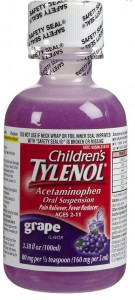Children’s Meds Coated with Brain Damaging Aluminum
 NaturalNews) Aluminum Lake food coloring, used to heavily coat liquid medicines for children, containsdangerous amounts ofaluminumand harmful synthetic petrochemicals.These “petrochemicals” are carcinogens containing petroleum, antifreeze and ammonia, which cause a long list of adverse reactions. Aluminum poisoning can lead toshort and long term central nervous system (CNS) damage,such asmemory impairments, autism, epilepsy, mental retardation, and dementia.
NaturalNews) Aluminum Lake food coloring, used to heavily coat liquid medicines for children, containsdangerous amounts ofaluminumand harmful synthetic petrochemicals.These “petrochemicals” are carcinogens containing petroleum, antifreeze and ammonia, which cause a long list of adverse reactions. Aluminum poisoning can lead toshort and long term central nervous system (CNS) damage,such asmemory impairments, autism, epilepsy, mental retardation, and dementia.
Research shows that just 4ppm of aluminum can cause the blood to coagulate. This is what causesAlzheimer’s Diseaseand has been documented toinhibit learning. Aluminum consumption can also be associated with the development ofbone disorders, including stress fractures.
Also known as tartrazine, FD&C Yellow Aluminum Lake is a chemical concoctionderived from coal tar. It is known to be areproductive toxin. All artificial colors contain Aluminum Lake, so when your child gets to pick betweenred, blue or green medicine,they’re reallychoosing whichpoisonthey get to consume. Several chemically enhanced food colorings containammoniaand therefore produce compounds proven to causevarious cancersin animal studies, according to CSPI, the Center for Science in the Public Interest. (http://www.cspinet.org/reports/chemcuisine.htm)
Most widely used food colors and their damaging actions:
•Blue #1: Research shows it causes kidney tumors in mice.
•Blue #2: Research shows even higher incidence of
tumors, specifically gliomas in male rates (a type of tumor that starts
in the brain or spine).
•Red #2: Toxic to rodents,even at modest levels, and causes tumors of the bladder.
•Red #3: FDA recognized it in 1990 as a cause of
thyroid cancer in animals. It was banned in cosmetics, but still allowed
in food and medicine.
•Red #40:Most popular dye of all. Debilitates the immune-system in mice. Allergic reactions common.
•Green #3: Causes bladder and testes tumors.
•Yellow #5: Affects behavior and inducessevere hypersensitivity reactions.
•Yellow #6: Causes adrenal tumors in animals.
The following is taken directly from FDA’s Regulatory Process and
Historical Perspectives: “Color additives are important components of
many products, making them attractive, appealing, appetizing, and
informative. Added color serves as akind of code that allows us to identify products on sight, like candy flavors and medicine dosages.” Really?! Decoding medicine dosages on sight?
There has been a 55% increase in U.S. toxic food dyes just since the year 2000. There are over15 million pounds of dyesput in foods, drinks, candy and medicine every year, and the FDA does nothing to protect consumers from thecolorful barrage of poison. (http://www.vaughns-1-pagers.com/food/artificial-food-colors.htm)
Studies reveal that children have consumed as much as three pounds of dye by the age of twelve
Here are some popular product and “brand” names you may mistake as exempt products: RD&C dyes and colors in baked goods, beverages, candy, cereal, drugs, pet food, personal care products, cosmetics, cough syrups, NyQuil,Tylenol, Robitussin,Jello, gelatins, Cheetos, Skittles, Fruity Pebbles, Marachino cherries, sausage, Mountain Dew, Doritos, chewing gum, and powdered drink mixes.
American companies doing business in Europe currently have tochange their products to natural colorings to meet European Union strict regulations. The FDA’s rationale is that because artificial food colorings are used mainly in foods and medicines of low or no nutritional value, that the
American public should “already be aware” of health implications, so it doesn’t matter if other toxins are added.
What are your options as opposed to poisonous medicines? Consult a naturopath (ND) for advice on ingredients in food and medicine.
Sources for this article include
http://chemicaloftheday.squarespace.com/todays-chemical/2009/7/7/fdc-yellow-5-aluminum-lake.html
http://www.fda.gov/ForIndustry/ColorAdditives/RegulatoryProcessHistoricalPerspectives/default.htm
http://emedicine.medscape.com/article/165315-overview
http://www.vaughns-1-pagers.com/food/artificial-food-colors.htm
http://www.feingold.org/Research/dyesinfood.html
http://www.intlfoodcraft.com/color_guide.html
http://healingautismandadhd.wordpress.com/2010/02/12/artificial-food-coloring-is-evil/
http://jennifercopley.suite101.com/health-concerns-regarding-artificial-colours-a197580
Learn more:http://www.naturalnews.com/034813_childrens_medicines_aluminum_pills.html#ixzz1l4ctSwGm
